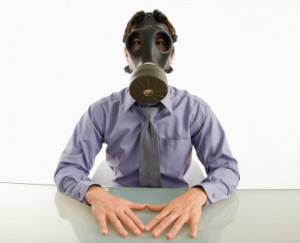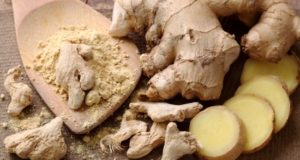 The most polluted air you breathe could very well be the air inside your house. Thanks to cleaning products, air fresheners, sealants, and dozens of other common items, the air inside your house is between two and five times more polluted than outside air, according to studies by the EPA and the World Health Organization. Yet before you can make things better for yourself and your family, you have to understand what’s really polluting your inside air and how to clear it out.
The most polluted air you breathe could very well be the air inside your house. Thanks to cleaning products, air fresheners, sealants, and dozens of other common items, the air inside your house is between two and five times more polluted than outside air, according to studies by the EPA and the World Health Organization. Yet before you can make things better for yourself and your family, you have to understand what’s really polluting your inside air and how to clear it out.
Top indoor air pollutants
The air in your house is polluted by the products you use to clean house, take care of yourself, and take care of your pets. Additional pollutants come from the materials used to build your house, make your carpets, and build your furniture. Even worse? When you make your home more energy efficient with super sealing, plastic on windows, or extra insulation, you can inadvertently trap more toxins inside.
One of the biggest in-home pollutants is formaldehyde. It’s used to make pressed wood products like cabinetry and most “some assembly required” furniture. Manufacturers also use formaldehyde in adhesive glues for carpet, upholstery, and paneling. You might also be putting formaldehyde into your home air system with a poorly vented kerosene heater or gas stove.
Close on the heels of formaldehyde are a group of carbon-based gases known as volatile organic compounds, or VOCs. They’re used as propellants in hairsprays, perfumes, and spray cleaners, but you’ll also find them as the scented element of detergents, air fresheners, and cleaning gels. They’re especially dangerous because they aren’t stable once they’ve been exposed to air – hence the “volatile” part of VOC.
The other big risks for most families are the invisible gases carbon monoxide and radon. Both build up in well-sealed homes, and both can be deadly. While carbon monoxide is more evenly distributed, radon is a heavy gas and tends to build up near the floor, making things worse for pets and crawling infants.
Of course, when air in your house gets bad, the whole family suffers. It starts with small things – runny nose, headaches, itchy eyes, or a sore throat. The symptoms fade when you spend time away from the house and come back strong when you get home. Over time, allergies, asthma, and lung problems set in along with chronic migraines and mysterious fatigue. In the worst cases, indoor air pollution can lead to lung failure, heart problems, and cancer.
150 Super-Easy Herbal Formulas for Green Cleaning
Getting rid of indoor air pollution
The good news about indoor air pollution is that you don’t have to live with it – even if you’re a super-sealer. The key is to be aware of what’s happening in your house, be cautious about the products you use, and be consistent about ventilation. These things are especially important in winter, when many of us hibernate instead of regularly going outside. You can also help yourself with these tips.
- Remember: If you feel better after a few hours outside than you do after an hour inside, you need to do something about the air in your home.
- Go through your chemical cleaners and replace as many as you can with natural cleaning products. This cuts exposure at the source.
- When cleaning with any store-bought cleaner, ventilate! Crack a window, swing the door open, or take the dirty item out to the garage for scrubbing.
- Replace chemical and gel air fresheners with homemade air fresheners or non-toxic essential oils.
- Check that your gas stove, heaters, or lamps are venting properly. Ditto for kerosene heaters or lamps and any generators you have at home.
- Practice good chimney flue and wood stove pipe maintenance to keep formaldehyde and carbon monoxide out of your house.
- When installing new carpets, cabinets, or wall panels, keep the windows open so adhesive and pressed wood VOCs can escape to the outside. If possible, let new item sit in the garage for twenty-four to forty-eight hours to “off-gas” and stabilize before putting them in your home.
- Make sure your home has a fresh air source, even if it’s super-sealed, to keep your family healthy all year long.
Once you get going, you’ll find many other ways to freshen up the air in your home and improve your indoor air quality. It’s a small thing, but something can be the cause of mysterious illnesses and sickness when things aren’t right. Take the time to check your house now and make sure you’re breathing fresh, clean air!
©2012 Off the Grid News
 Off The Grid News Better Ideas For Off The Grid Living
Off The Grid News Better Ideas For Off The Grid Living




